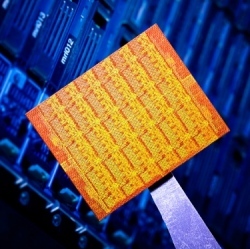
One version of the processors will run at 10 watts, about half as much as its current Ivy Bridge design. It said the improvement would mean devices could become thinner, faster and offer extended battery life.
In addition it said the chips were designed to better support "perceptual" tasks such as voice recognition, facial analysis and depth tracking. Intel is the world’s biggest semiconductor supplier to laptop and desktop PC manufacturers, outselling its x86-based chip rival AMD.
However, the rise of Apple’s iOS, Google’s Android and the upcoming release of Windows RT – operating systems designed for chips based on ARM’s rival architecture – means that it has missed out on much of the fast-growing tablet computer sector.
ARM-based designs were picked because of their reputation for low-energy use. But Intel hopes to gain an advantage by offering chips that can support the full Windows 8 system while using less energy than at present.
"Battery life, for example, on an ultrabook next year will be nine hours for a system that would deliver five hours today," Adam King, Intel’s director of notebook product marketing told the BBC.
Haswell represents the "tock" in Intel’s "tick-tock" development model: "Tocks" represent a redesign of a chip’s architecture, while "ticks" concentrate on shrinking the size of its transistors. As such Haswell chips retain the 22 nanometre process used to make the current generation of processors, but overhauls their design.
One of the key innovations has been to merge the chip’s CPU (central processing unit) with its PCH (platform controller hub).
The CPU carries out calculations and program instructions, while the PCH handles input and output including connections to USB peripherals, audio, and storage.
In the current Ivy Bridge design the CPU uses 17 watts and the PCH a further 4 watts, giving a total energy requirement of 21 watts.
But this has been reduced in Haswell.
